The Ultimate Guide to Gut Health: What It Is, Why It Matters, and How to Support It

Your gut does far more than digest food. It’s home to trillions of microbes that influence digestion, metabolism, immunity, and even mood. Collectively known as the gut microbiome, this vast internal ecosystem acts like a central hub for your wellbeing.
When balanced, it keeps you energised, clear-headed, and resilient. When disrupted, it may trigger bloating, fatigue, low immunity, or mood swings. Modern life, rich in processed food, stress, and antibiotics, often tips this balance.
This guide explores what gut health really means, why it matters for every system in your body, and the most effective, evidence-backed ways to nurture it. You’ll also find links to smaller, more detailed guides on specific topics so you can explore further without feeling overwhelmed.
(See also: Signs of Poor Gut Health for symptoms and early warning signs.)
What is gut health?
Gut health refers to the overall condition and function of your digestive tract, particularly the trillions of microorganisms that inhabit it. These microbes form an intricate community that interacts constantly with your intestinal lining, immune cells, and nervous system.
When these relationships are balanced, you experience smooth digestion, efficient nutrient absorption, strong immunity, and can support your mental health. When they’re disrupted, a state called dysbiosis, the effects ripple through your whole body.
Research shows the microbiome operates as a “second brain,” communicating with nearly every major organ¹ ².
Study Spotlight: Cresci (2015), found that the gut microbiome regulates immune and metabolic pathways and even influences behaviour through chemical signalling with the nervous system.
Why it matters: Your gut is not just a digestion site; it’s an active regulator of health across your lifespan.
Key elements of gut health include
- Variety: The more types of good bacteria you have, the stronger and more balanced your gut tends to be.
- Strong gut lining: Think of your gut wall like a security gate — it lets nutrients in but keeps harmful stuff out.
- Good digestion: When your gut breaks down food properly and removes waste easily, everything runs smoothly.
(If you’d like to understand the microbes themselves, see What Are Live Cultures?)
Why gut health matters
A healthy microbiome underpins nearly every aspect of wellbeing. Here are four of the most important connections.
1. Immunity and inflammation
About 70% of your immune system actually lives in your gut.
Inside the gut wall is a network of immune cells called the gut-associated lymphoid tissue (GALT), it’s basically your body’s immune training ground. Here, immune cells “talk” to friendly gut bacteria and learn to tell the difference between helpful and harmful substances.
When this relationship is strong, your body can fight off real threats like viruses and bacteria without overreacting to harmless things like food or pollen. But when it’s disrupted, the immune system can become confused, leading to unnecessary inflammation or sensitivities.
Study Spotlight Vighi et al. (2008) showed that the GALT acts as a kind of classroom for immune cells, helping them build tolerance and react properly to allergens and infections.
Why it matters: A balanced gut helps your immune system stay calm and focused strong enough to defend you, but smart enough not to overreact.
2. Mood and the gut–brain axis
Your gut and brain are constantly chatting with each other. They communicate through a long nerve called the vagus nerve and through chemical messengers such as serotonin (the “happy” hormone) and GABA, which helps calm the nervous system.
When your gut bacteria are healthy and balanced, these messages flow smoothly — helping to support a stable mood, focus, and emotional wellbeing. But when the gut is out of balance, that communication can get scrambled, sometimes showing up as anxiety, low mood, or brain fog.
Study Spotlight: Strandwitz et al. (2019) discovered certain gut bacteria that actually make or use GABA, the same calming chemical your brain relies on to ease stress and anxiety.
Why it matters: Nurturing your gut bacteria can help keep those “feel-good” messages between your gut and brain running smoothly, supporting both mood and mental clarity.
(Explore this further in our blog on the gut-brain axis)
3. Energy and Metabolism
Your gut bacteria don’t just help with digestion; they also help power your body. When you eat foods rich in fibre, those fibres get broken down by gut microbes into special compounds called short-chain fatty acids (SCFAs), including acetate, propionate, and butyrate.
These SCFAs feed the cells that line your gut, giving them energy to keep your digestive system strong. They also play a role in balancing blood sugar and reducing inflammation throughout the body⁵.
When your gut bacteria are working well, you may feel more energised, with steadier energy levels and fewer sugar crashes.
4. Skin and Hormonal health
Your gut doesn’t work in isolation; it communicates with your skin and hormones too. When your gut is balanced, it can help manage inflammation and support stable hormone levels.
But when things go off balance, it can show up on the outside as acne, eczema, or rosacea and on the inside as mood swings, irregular cycles, or other hormonal changes.
Keeping your gut microbes happy with nourishing foods, fibre, and live cultures can have benefits that reach far beyond digestion even to glowing skin and balanced hormones.
When the gut falls out of balance
Signs of dysbiosis include:
- Persistent bloating, gas, constipation, or reflux
- Frequent infections or slow recovery
- Fatigue or brain fog
- Skin breakouts or dull complexion
- Low mood or anxiety
Long-term imbalance can increase inflammation, affect nutrient absorption, and weaken immunity.
Read more detail in Signs of Poor Gut Health for evidence-based guidance.
The modern gut crisis
The modern world challenges our microbiome at every turn.
- Ultra-processed foods (UPFs) with emulsifiers and preservatives can erode microbial diversity and damage the gut lining⁶.
- Chronic stress alters the composition of gut bacteria and slows digestion (Singh et al., 2021)⁷.
- Poor sleep and sedentary behaviour disrupt microbial rhythms.
- Frequent antibiotics and environmental toxins reduce beneficial strains⁸.
Study Spotlight: Rondinella et al. (2025) found that high consumption of UPFs reduced beneficial species such as Akkermansia muciniphila while increasing gut permeability and inflammatory markers.
Why it matters: Minimising additives protects the gut’s barrier and overall resilience.
Fortunately, the microbiome is adaptable. Within weeks of dietary change, beneficial species can rebound. (See How to Detox Your Gut for a gentle reset.)
How to support your gut health
Step 1: Reset and detoxify naturally
Your body already detoxifies itself through the liver, kidneys, and colon. A gut-friendly detox means supporting those systems, not starving them.
Focus on:
- Eliminating irritants such as processed foods high in saturated fat, salt and sugar.
- Adding anti-inflammatory foods like leafy greens and omega-3 fats.
- Hydrating and moving daily to encourage natural elimination.
Study Spotlight: Sanz et al. (2025) showed that diets rich in plant fibres and polyphenols strengthen the gut barrier and lower circulating inflammatory compounds.
Why it matters: Detoxing with real food restores microbial balance safely.
Find practical steps in How to Detox Your Gut.
Step 2: Eat the rainbow: 30 plants a week
Microbial diversity thrives on dietary diversity. Each plant provides distinct fibres and phytochemicals that feed different bacteria⁸ ⁹.
Aim for 30 unique plant foods per week: fruits, vegetables, nuts, seeds, legumes, herbs, and spices all count.
Study Spotlight: De Filippo et al. (2010) compared children from rural Africa and Europe. Those eating high-fibre traditional diets had twice the microbial diversity and higher SCFA levels.
Why it matters: Plant variety fuels gut bacteria that can reduce inflammation and support digestion.
Study Spotlight: Yatsunenko et al. (2012) examined microbiomes across age and geography and found that diversity increases with fibre intake and cultural diet variety but is lowest in industrialised nations.
Why it matters: Our environment and diet shape our gut ecosystem more than our genetics.
Discover easy ways to reach the magic 30 in 30 Plants a Week.
Step 3: Add probiotics and fermented foods
Probiotics are live cultures that are beneficial bacteria found in fermented foods and certain supplements. These organisms replenish microbial balance and enhance digestion and immunity¹⁰ ¹¹.
Good sources of live cultures include yoghurt, kefir, kimchi, sauerkraut, tempeh, miso, and Biomel drinks or powders enriched with live cultures, prebiotic fibres and vitamins and minerals.
Consistency matters more than timing, try a small daily serving.
Study Spotlight: Ross et al. (2024) reviewed dietary patterns and found that regular consumption of fermented foods increased Bifidobacterium and Lactobacillus species while raising SCFA production.
Why it matters: A spoonful of fermented food each day can measurably boost beneficial bacteria.
For a deep dive, visit What Are Live Cultures?
Step 4: Build consistency: habit stacking for gut health
Your gut thrives on routine. Feeding it beneficial nutrients, fibre, and live cultures consistently allows friendly microbes to flourish.
Habit stacking (pairing a new habit with an existing one) makes consistency effortless.
Example stacks:
- After preparing your morning coffee, drink a glass of water.
- When making breakfast, stir Complete Gut Powder into yoghurt.
- During your mid-morning break, enjoy a Biomel Gut Health Shot.
Study Spotlight: Claesson et al. (2012) found that elderly adults who maintained consistent, fibre-rich diets had more diverse microbiomes and lower markers of frailty than those with irregular habits.
Why it matters: Regularity (what and when you eat) supports long-term microbial stability.
Learn more in Mastering Your Gut Health Routine.
Other everyday gut-supporting habits
- Prioritise sleep: Poor sleep alters microbial rhythms and may increase cravings for processed foods.
- Move daily: Even moderate exercise increases diversity and SCFA levels¹⁵.
- Manage stress: Mindfulness and breathwork reduce gut-brain inflammation.
- Hydrate: Water helps fibre ferment properly and supports elimination¹⁶.
Final takeaway
Your gut health influences every part of you, from digestion and immunity to mood and energy.
Improving it doesn’t require extreme cleanses or complicated supplements.
Start with small, sustainable actions:
- Notice the Signs of Poor Gut Health.
- Detox naturally with real food and hydration.
- Eat the rainbow and add Live Cultures daily.
- Build consistency through Habit Stacking.
These incremental steps help beneficial bacteria thrive, creating lasting energy and vitality. Your gut will thank you.
References
- Cresci G. (2015). Gut microbiome: What we do and don’t know. Nutr. Clin. Pract.
- Van Hul M., et al. (2024). What defines a healthy gut microbiome? Cell Metab.
- Vighi G., et al. (2008). Allergy and the gastrointestinal system. Clin. Exp. Immunol.
- Strandwitz P., et al. (2019). Neurotransmitter modulation by gut bacteria. Nat. Microbiol.
- Sanz Y., et al. (2025). The gut microbiome connects nutrition and human health. Nat. Rev. Gastroenterol. Hepatol.
- Rondinella D., et al. (2025). The detrimental impact of ultra-processed foods on the gut microbiome and gut barrier. Nutrients.
- Singh R., et al. (2021). Microbiota in health and disease: The gut–liver–brain axis. Front. Immunol.
- De Filippo C., et al. (2010). Impact of diet in shaping gut microbiota. Proc. Natl. Acad. Sci. USA.
- Yatsunenko T., et al. (2012). Human gut microbiome viewed across age and geography. Nature.
- Vlasova A., et al. (2016). Comparison of probiotic Lactobacilli and Bifidobacteria effects. Vet. Immunol. Immunopathol.
- Card D., et al. (2024). Synbiotics and next-generation probiotics. Nutrients.
- Ross R. P., et al. (2024). Diet and the gut microbiome. Nat. Rev. Microbiol.
- Clear, J. (2018). Atomic Habits: An Easy & Proven Way to Build Good Habits & Break Bad Ones. Penguin.
- Claesson M. J., et al. (2012). Gut microbiota composition correlates with diet and health in the elderly. Nature.
- Bressa C., et al. (2017). Differences in gut microbiota composition in active and sedentary women. PLOS One.
- Vanhaecke T., et al. (2022). Drinking water source and intake associated with distinct gut microbiota signatures. J. Nutr.


